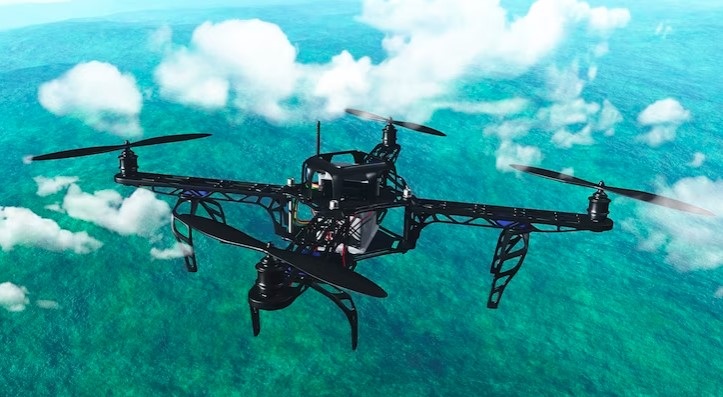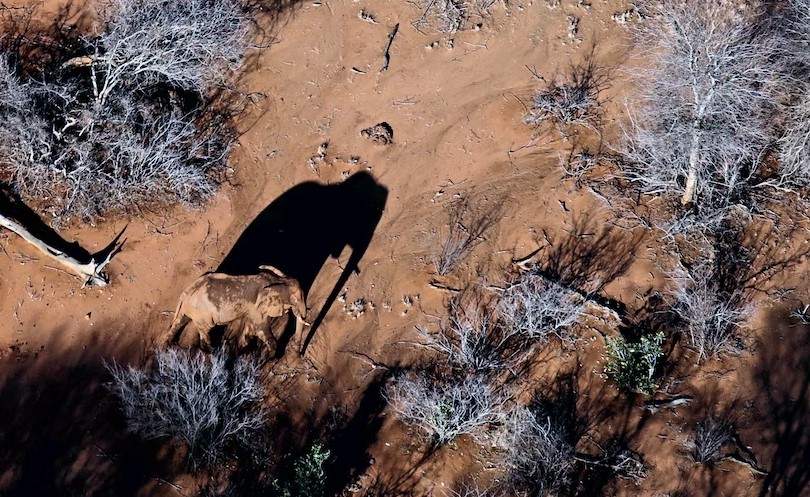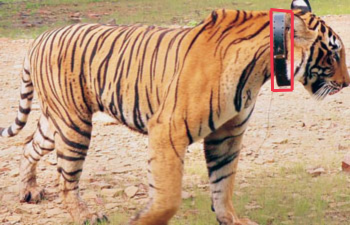Conservation Metrics, a US-based wildlife conservation organization, uses machine learning to monitor wildlife and plan conservation efforts. It uses an advanced AI-based solution to distinguish between elephant calls and other sounds in a rainforest. Moreover, researchers use this data to estimate the elephant population & identify individual elephants accurately, tracking their movements in real-time and saving them from illegal poaching. Artificial intelligence (AI) and machine learning (ML) are among the latest technological advancements that have helped researchers and conservationists in understanding and protecting endangered species. In addition, this blog will discuss the top 10 ways to protect endangered species with the help of technology, including examples of AI/ML technology that can follow endangered animals and prevent species extinction.
Table of Contents
Here are the top 10 ways to protect endangered species:
Gramener’s Species Detection Solution
Gramener, in partnership with Microsoft, developed a species detection solution that uses AI/ML algorithms to detect fish species in real time, helping researchers monitor and analyze the population dynamics of any animal species.
Gramener, under the Microsoft AI for Earth grant, also created a solution to monitor the Salmon fish species in the Nisqually River. This computer vision application was used to detect and count salmon in real-time. Using camera traps, this ML-based solution helps researchers monitor and manage the population dynamics of salmon and take proactive measures to protect them from extinction.
Predictive Analytics for Wildlife Conservation
Predictive analytics can help researchers identify and monitor the threats that endangered species face. By analyzing the data collected from various sources, including satellite imagery, remote sensors, and wildlife tracking devices, researchers can predict potential threats and take proactive measures.
Marwell Wildlife, a UK-based conservation firm, uses predictive analytics to better understand the key challenges surrounding the Grévy’s zebra, an endangered species found only in northern Kenya and southern Ethiopia. With just 2,500 of these zebras remaining, Marwell is using the solution to identify the factors that impact the zebra population. Furthermore, one of the factors influencing the killing of zebras by the locals is the use of zebra fats in traditional medicines.
Conservation Drones
Conservation drones are unmanned aerial vehicles that can collect data and images from hard-to-reach areas. These drones can be used to monitor the habitats of endangered species, track their movements, and identify potential threats to their survival. Furthermore, these drones have proven to be highly effective tools in wildlife conservation efforts.
The Nature Conservancy’s Colorado Chapter used drones to track bison on the Conservancy’s Zapata Ranch. The drones were able to go where the staff could not. In another project, the drones used attached infrared cameras to create data layers for mapping and analyzing Cottonwood trees.
Satellite Imagery to Track Endangered Wildlife
Satellite imagery can provide researchers with valuable information about the habitats and movements of endangered species. Researchers can also use this information to identify areas that need protection and to monitor the health of endangered species.
Gramener used Deep learning to get aerial camera footage for the purpose of detecting and classifying elephants in the African forests where they were being poached. The solution, developed in partnership with Microsoft for Save the Elephants, uses high-resolution aerial images to track elephants in real time. Therefore, by being tracked in real-time, elephants could be protected from poachers in the area. Here is the solution overview as explained by our Chief Decision Scientist, Ganes Kesari.
Networked Sensors
Researchers can use networked sensors to monitor the behavior and movements of endangered species. In addition, they can place these sensors in habitats to monitor environmental conditions, detect potential threats, and provide real-time data on the behavior of endangered species.
Monitoring animal populations in urban areas such as airports is vital to their protection. SUAS (small, unmanned aircraft systems) are being deployed with mounted sensors to monitor animal species without disturbing them in places not easy to access or navigate.
Environmental DNA (eDNA)
Researchers can use environmental DNA, a non-invasive technique, to identify the presence of endangered species in their habitats. This technique involves collecting DNA samples from the environment, such as water or soil, and analyzing them to identify the presence of endangered species.
Currently, the World Wildlife Fund (WWF) uses eDNA techniques to understand the biodiversity of an area. It studies the eDNA traces present in each geography to determine the species living there.
Remote Control Video and Photography
Researchers can use remote control video and photography to monitor the behavior and movements of endangered species and collect data on their behavior without disturbing their natural habitats.
WWF has set up remote camera traps across the globe in regions such as Southwest Australia & Indonesia to capture footage of animals such as tigers, rhinos, and long-tailed dunnart. The purpose of setting up remote video cameras is to better understand the behavior of the concerned species as well as the threats they face.
Remote Wildlife Sound Monitoring
By using remote wildlife sound monitoring, researchers can easily monitor the vocalizations of endangered species. This innovative technology can offer valuable information about the behavior and movements of these species. Additionally, it can assist researchers in identifying potential threats to their survival.
In 2015, researchers declared the Coqui Ilanero frog endangered. This tiny Puerto Rican frog species has a unique squeaky call. Researchers are currently capturing this frog’s unique squeaky call through iPods deployed across the Puerto Rican wetlands to identify the health of the frog population. Furthermore, this remote sound monitoring system can track any animal species with a detectable call.
Electronic Smart Collars for Animals
Researchers can use electronic smart collars to track the movements and behavior of endangered species. Moreover, these collars can provide real-time data on the location and behavior of endangered species, which can help researchers identify potential threats and take proactive measures to protect them.
WWF- Nepal uses smart GPS collars on animals such as snow leopards and tigers to study their roaming, mating, and feeding methods as well as protect them from poaching.
AI to Combat Wildlife Trafficking
By analyzing large amounts of data, AI algorithms can identify potential smuggling routes and predict future trafficking activities. It can also help law enforcement agencies in preventing wildlife trafficking and protecting endangered species from illegal trade.
Wildlife trafficking is an illegal industry with a current size of $23B. AI models such as Microsoft’s Project SEEKER are being used to identify any illegal wildlife items found in cargo at airports and ship ports. Already installed at Heathrow Airport, it can automatically alert enforcement agencies when it detects the presence of an illegal wildlife item helping law enforcement.
Read More: Identify Any Plant and Animal Species by ML-Driven Photo Detection
Gramener’s Biodiversity Conservation Efforts – Small Steps to a Great Goal
Gramener’s penguin counting solution showcases how technology can help protect endangered species, along with the salmon species detection and elephant monitoring solution.
Gramener leveraged deep learning to identify penguins in drone images of an island in Antarctica. The project helped researchers get a better understanding of penguin populations and their habitat, ultimately aiding conservation efforts. Moreover, the use of AI in penguin conservation is an exciting development that has shown great promise in saving these beloved creatures from extinction.
Protecting animal species works not just for them. It also plays a critical role in maintaining natural ecosystems that enable humans to thrive. The question is not why we should save endangered species but rather how. And that is where the amalgamation of human intent and technology comes in.
If the topmost question on your mind is how to help endangered species, reach out to Gramener to explore some of our foremost solutions to mitigate endangered species extinction.








